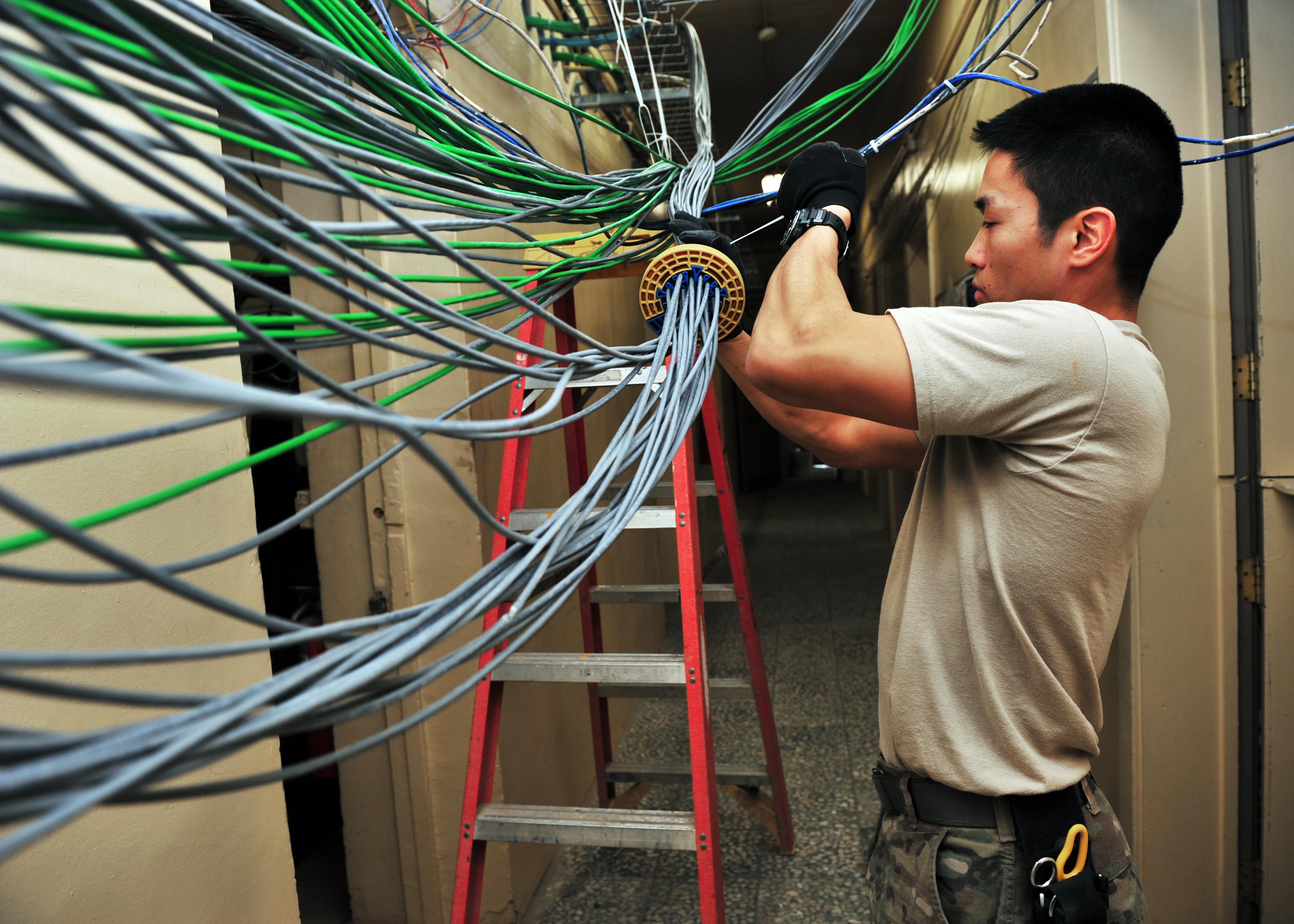85 Engineering Installation Squadron
 Senior Master Sgt. Dustin Mercer, 205th Engineering Installation Squadron electronic system NCO in charge, greets his wife, Tech Sgt. Trinh Mercer, 137th Force Support Squadron DEERS/RAPIDS representative, at Will Rogers World Airport, Aug. 2, 2015, after returning from a six-month deployment to Southwest Asia. 210th Engineering Installation Squadron Civil Engineer Squadron 133rd Airlift Wing Headquarters Contact. Download Image: Full Size (1.85 MB) Tags: 407th ECES, Units. ALI BASE, Iraq -- Senior Airman Nathan Sole, 407th Expeditionary Civil Engineer Squadron fire fighter, scans a room for fire hazards Oct.
Senior Master Sgt. Dustin Mercer, 205th Engineering Installation Squadron electronic system NCO in charge, greets his wife, Tech Sgt. Trinh Mercer, 137th Force Support Squadron DEERS/RAPIDS representative, at Will Rogers World Airport, Aug. 2, 2015, after returning from a six-month deployment to Southwest Asia. 210th Engineering Installation Squadron Civil Engineer Squadron 133rd Airlift Wing Headquarters Contact. Download Image: Full Size (1.85 MB) Tags: 407th ECES, Units. ALI BASE, Iraq -- Senior Airman Nathan Sole, 407th Expeditionary Civil Engineer Squadron fire fighter, scans a room for fire hazards Oct.

BAGRAM AIRFIELD, Afghanistan -- Forward deployed from Southwest Asia, Airmen of the 85th Engineering and Installation Squadron from Keesler Air Force Base, Mississippi, travel throughout the U.S. Air Force Central Command area of responsibility completing communications ventures required to facilitate secure operations downrange. The 85 EIS is a unique entity among Air Force communications squadrons. Airmen assigned to this one-of-a-kind unit are not only responsible for wiring intricate communications systems, but altering structures to accommodate their projects.
“We are the only active duty EIS in the Air Force,” Pitts said. “We go on temporary duty assignments all over the world doing anything from building towers, to climbing towers to install antennas; anything from setting manhole duct systems in the ground, to doing indoor communication infrastructure.
We do it all.” Comprised of approximately 135 Airmen, members of the 85 EIS spend upwards of 200 days traveling each year. “Our squadron motto is ‘worldwide, with pride,’ Pitts continued.
“We try to live by that. Members of our squadron complete high-value projects across the globe. We take extreme pride in that mission.” Perhaps the most crucial aspect of their operation, 85 EIS Airmen are charged with ensuring Emissions Security standards are adhered to on each of their project sites. EMSEC is the practice by which the Air Force thwarts enemy attempts to intercept and exploit classified, and in some instances unclassified, information by containing compromising emanations within an inspectable space. “There are very specific requirements governing the proximity and position of network cables that transmit classified and unclassified data,” Pitts said.

“We are responsible for conducting installs that are up to code so that valuable information continues to be safeguarded.” Though Airmen of the 85 EIS work behind the scenes, their mission has a direct impact on events taking place beyond Bagram Airfield. “If we don’t make it impossible for them, the enemy could obtain secure information through unsecure means,” Pitts said. “We may be handling wires and cables, but in reality we’re dealing with potential lives and the safety of the Air Force’s most valuable assets: its Airmen.”.